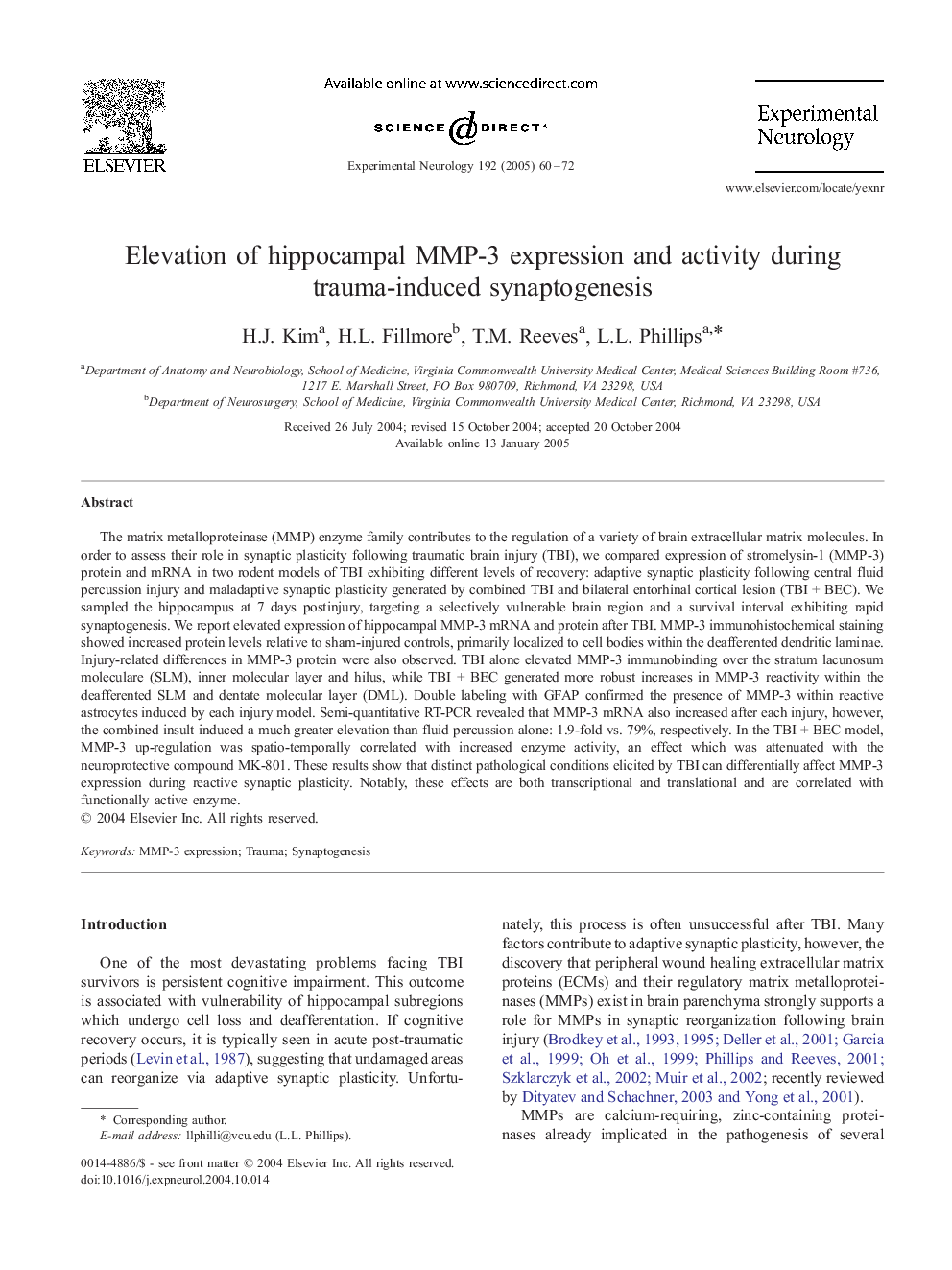| Article ID | Journal | Published Year | Pages | File Type |
|---|---|---|---|---|
| 9192079 | Experimental Neurology | 2005 | 13 Pages |
Abstract
The matrix metalloproteinase (MMP) enzyme family contributes to the regulation of a variety of brain extracellular matrix molecules. In order to assess their role in synaptic plasticity following traumatic brain injury (TBI), we compared expression of stromelysin-1 (MMP-3) protein and mRNA in two rodent models of TBI exhibiting different levels of recovery: adaptive synaptic plasticity following central fluid percussion injury and maladaptive synaptic plasticity generated by combined TBI and bilateral entorhinal cortical lesion (TBI + BEC). We sampled the hippocampus at 7 days postinjury, targeting a selectively vulnerable brain region and a survival interval exhibiting rapid synaptogenesis. We report elevated expression of hippocampal MMP-3 mRNA and protein after TBI. MMP-3 immunohistochemical staining showed increased protein levels relative to sham-injured controls, primarily localized to cell bodies within the deafferented dendritic laminae. Injury-related differences in MMP-3 protein were also observed. TBI alone elevated MMP-3 immunobinding over the stratum lacunosum moleculare (SLM), inner molecular layer and hilus, while TBI + BEC generated more robust increases in MMP-3 reactivity within the deafferented SLM and dentate molecular layer (DML). Double labeling with GFAP confirmed the presence of MMP-3 within reactive astrocytes induced by each injury model. Semi-quantitative RT-PCR revealed that MMP-3 mRNA also increased after each injury, however, the combined insult induced a much greater elevation than fluid percussion alone: 1.9-fold vs. 79%, respectively. In the TBI + BEC model, MMP-3 up-regulation was spatio-temporally correlated with increased enzyme activity, an effect which was attenuated with the neuroprotective compound MK-801. These results show that distinct pathological conditions elicited by TBI can differentially affect MMP-3 expression during reactive synaptic plasticity. Notably, these effects are both transcriptional and translational and are correlated with functionally active enzyme.
Keywords
Related Topics
Life Sciences
Neuroscience
Neurology
Authors
H.J. Kim, H.L. Fillmore, T.M. Reeves, L.L. Phillips,
